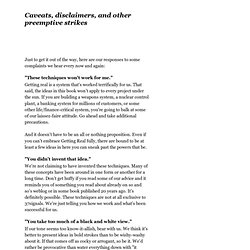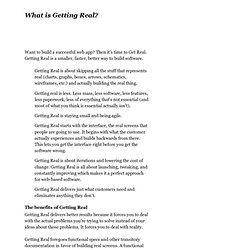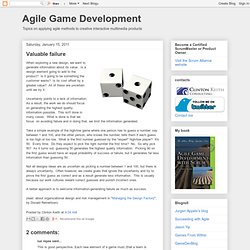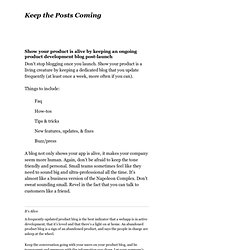

Innovation. Vision. Scope Management. Live Producing. Managing stakeholders. Microsoft wants to monopolise games development on PC. We must fight it. With its new Universal Windows Platform (UWP) initiative, Microsoft has built a closed platform-within-a-platform into Windows 10, as the first apparent step towards locking down the consumer PC ecosystem and monopolising app distribution and commerce.

In my view, this is the most aggressive move Microsoft has ever made. While the company has been convicted of violating antitrust law in the past, its wrongful actions were limited to fights with specific competitors and contracts with certain PC manufacturers. This isn’t like that. Here, Microsoft is moving against the entire PC industry – including consumers (and gamers in particular), software developers such as Epic Games, publishers like EA and Activision, and distributors like Valve and Good Old Games. Microsoft has launched new PC Windows features exclusively in UWP, and is effectively telling developers you can use these Windows features only if you submit to the control of our locked-down UWP ecosystem.
Caveats, disclaimers, and other preemptive strikes. Just to get it out of the way, here are our responses to some complaints we hear every now and again: "These techniques won't work for me.

" Getting real is a system that's worked terrifically for us. That said, the ideas in this book won't apply to every project under the sun. If you are building a weapons system, a nuclear control plant, a banking system for millions of customers, or some other life/finance-critical system, you're going to balk at some of our laissez-faire attitude. Go ahead and take additional precautions. And it doesn't have to be an all or nothing proposition.
"You didn't invent that idea. " We're not claiming to have invented these techniques. "You take too much of a black and white view. " If our tone seems too know-it-allish, bear with us. What is Getting Real? Want to build a successful web app?

Then it's time to Get Real. Getting Real is a smaller, faster, better way to build software. Getting Real is about skipping all the stuff that represents real (charts, graphs, boxes, arrows, schematics, wireframes, etc.) and actually building the real thing. Getting real is less. Less mass, less software, less features, less paperwork, less of everything that's not essential (and most of what you think is essential actually isn't). The benefits of Getting Real Getting Real delivers better results because it forces you to deal with the actual problems you're trying to solve instead of your ideas about those problems. Getting Real foregoes functional specs and other transitory documentation in favor of building real screens. Finally, Getting Real is an approach ideally suited to web-based software. How To Write Vigorous Software Vigorous writing is concise. —From "The Elements of Style" by William Strunk Jr. No more bloat Getting Real gets rid of...
Managing Risk in Video Game Development. How do you best manage risk when creating a game?

Using this article and the attached spreadsheet, you can better identify the problem areas in your game and get a sense of whether any decisions you are making actually make business sense. Ours is a tumultuous industry, rife with unexpected project and studio failures. There are countless stories of canceled projects, unanticipated multi-year delays, cost overruns, mass layoffs, and unexpected project quality problems. Often, these surprises come from well-known and well-respected studios with a long and storied history of producing high-quality projects.
On the technology side, we sometimes select platforms and engines poorly, postpone bug fixing until it's too late, build undisciplined technical teams to with inadequate standards and poor coordination, and incur mountains of technical debt while underestimating the risk of avalanche. On the surface, these all look like completely different problems. Valuable failure. When exploring a new design, we want to generate information about its value.

Is a design element going to add to the product? Is it going to be something the customer wants? Is its cost offset by a greater value? All of these are uncertain until we try it. Uncertainty points to a lack of information. Take a simple example of the high/low game where one person has to guess a number, say between 1 and 100, and the other person, who knows the number, tells them if each guess is too high or too low. Not all designs ideas are as uncertain as picking a number between 1 and 100, but there is always uncertainty. A better approach is to welcome information-generating failure as much as success. (read about organizational design and risk management in "Managing the Design Factory", by Donald Reinertsen) +1 to Leadership — Bad Leadership Culture is Cross-Cultural.
How hard can it be - Complexity - Harvey Maylor. Keep the Posts Coming. Don't stop blogging once you launch.

Show your product is a living creature by keeping a dedicated blog that you update frequently (at least once a week, more often if you can). Things to include: Faq How-tos Tips & tricks New features, updates, & fixes Buzz/press A blog not only shows your app is alive, it makes your company seem more human. Again, don't be afraid to keep the tone friendly and personal. It's Alive A frequently-updated product blog is the best indicator that a webapp is in active development, that it's loved and that there's a light on at home.
Keep the conversation going with your users on your product blog, and be transparent and generous with the information you share. One Month Tuneup.